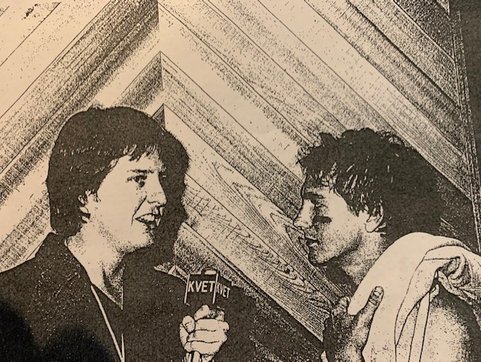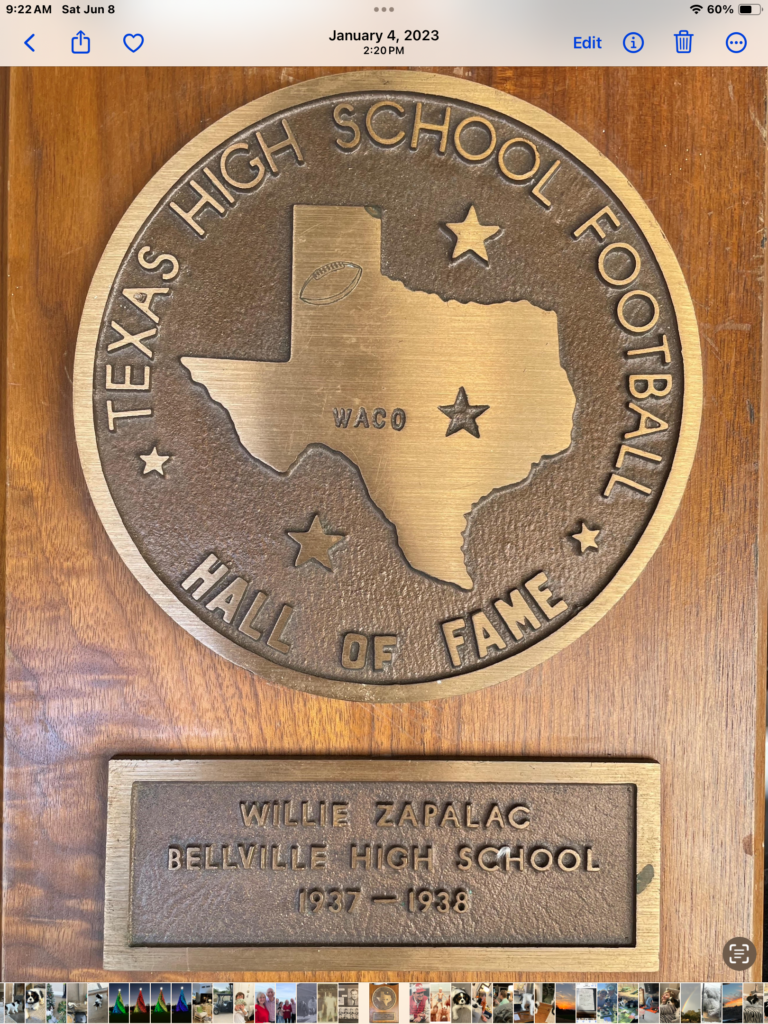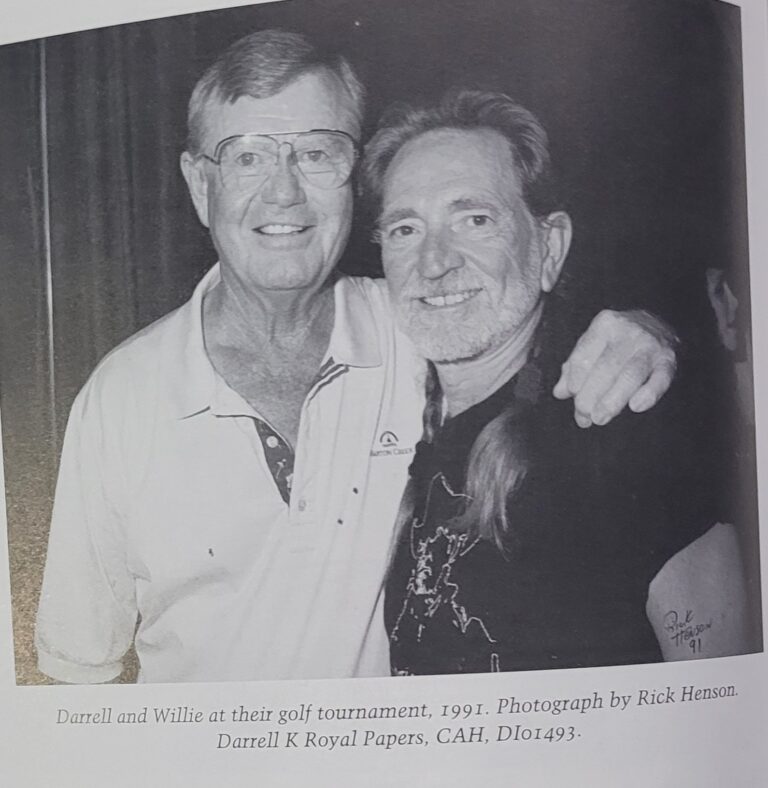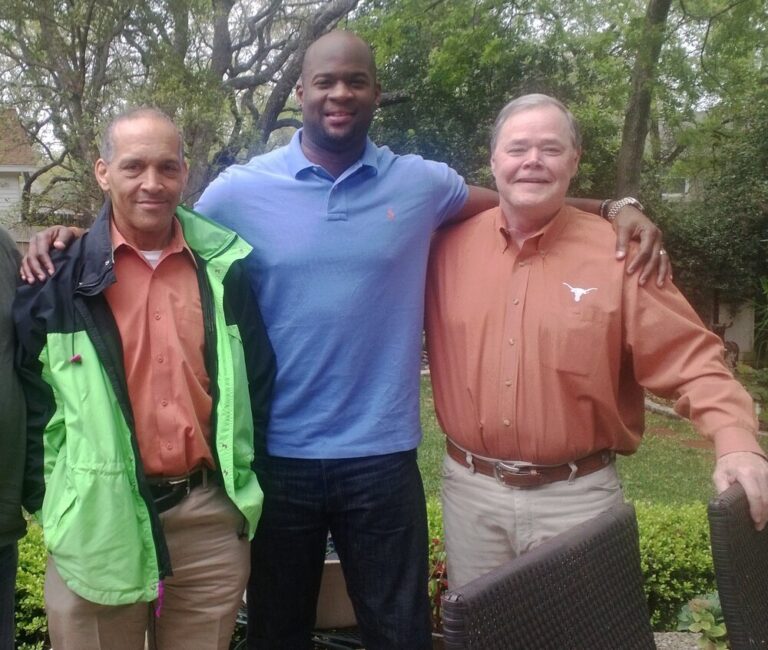The Rise and Fall of Longhorn Football
The Rise and Fall of Texas Longhorn football prior to 2023 by Larry Carlson
Journalism Professor Larry Carlson has been a Longhorn fan since middle school. He was part of the media that covered the Longhorns starting with Randy McEachern and Coach Fred Akers (see Photos).
Larry Carlson
Media savvy journalism Professor Larry Carlson has written one of the most succinct in-depth articles about Longhorn football from 1957-2021. While I do not agree with some of his comments, I share his passion and frustration with the demise of good fundamental football that led to four national championships and at least ten near misses for national titles in (1961, 1964, 1968, 1977, 1981, 1983, 2001, 2004, 2008, and 2009. )
Larry’s article is long, so it is broken into 5 Chapters:
1) Longhorn football from 2010-2021
2) Theories of the demise of Texas football
3) The changes in demographics, politics, economics, and the advent of social media influence on Texas football.
4) Texas football review from 1982- 2021.
5) Texas football from 1957-1984 – While many/most who read chapter 5 will consider this era ancient history, it remains the standard-bearer for Longhorn football greatness. Mack Brown’s teams were the closest to statistically comparing to the DKR and Akers era, and Professor Carlson shares his thoughts on the great years produced by the Mack Brown teams.
Billy Dale
THE RISE AND FALL OF LONGHORN FOOTBALL ????
Chapter I- A Dozen Years Of Football Doom
Analysis by Larry Carlson ( lc13@txstate.edu )
It’s perhaps the most puzzling of all mysteries in collegiate football this century. The disappearance of Longhorn football for the past dozen years.
Yes, there was a sighting of Longhorn pigskin relevance for a fleeting moment in New Orleans three years ago. But otherwise, Bevo has been quieter than Jimmy Hoffa as of late. It’s an enigma wrapped up in a riddle. Something like that.
It’s way past time to consult the world’s best spies, agents and detectives. James Bond, Joe Friday, Sherlock Holmes and certainly the no-nonsense Dirty Harry Callahan.
The family has otherwise spared no expense in trying to resurrect the Longhorns of yesteryear and the recruits keep on signing up. The results, though, save for one stirring Sugar Bowl victory over Georgia, are missing. But like 007’s chilled martini, UT backers are much more shaken than stirred. Yes, the natives are restless, and why not? Twelve years is a long time for anything, especially football irrelevance for a once-blueblood lineage. And a final chapter of the vanishing act may not even be completed just yet. This offseason promises to be a cliffhanger chapter for the faithful.
When Colt McCoy winced his way off the floor of the Rose Bowl against Alabama an eternity ago, not many would have predicted that Texas would fall like a blind roofer for twelve agonizing years. But like moldy bread on a rancid sandwich, Texas fell to 5-7 in 2010 and lost an astonishing six conference games, then again lost six Big XII contests last fall and had another miserable 5-7 year that seemed to come out of nowhere but hell. In between, there was a full decade of disappointments, especially if you realize that UT’s Sugar Bowl “We’re Ba-a-a-ck” champs still lost four times in 2018.
As Sergeant Joe Friday of “Dragnet” always liked to stick to the facts in unraveling whodunits, these are some of the salient ones, and they are not rated G.
— In the past dozen seasons, 2010-2021, Texas went an extremely disappointing 83-67. It was dangerously even closer to .500 in league matchups, with UT turning in a 55-52 mark.
— The previous dozen seasons had produced 128 wins against 27 losses. And UT went 80-16 in Big XII play, winning five of every six rather than breaking even.
— Texas had four empty bowl seasons in the last 12-year period. They had no seasons without a bowl in the ’98-’09 stretch.
— UT football recorded five losing W-L marks since 2009, the worst stretch in school logbooks. The Horns of 1998-2009 followed up on three straight nine-win seasons with nine consecutive ten-wins-or-better years.
— The Longhorns had one top ten finish (ninth, in ’18) in the most recent dirty dozen years….the earlier Horns had five top five finishes, including a national championship in 2005. They never finished out of the rankings and stood among the top ten more than half of the twelve years.
— Texas has zero conference titles since 2009. Oklahoma has nine. Baylor…gulp…has three. And the Bears have been to two Sugar Bowls since the Horns were there. Unbelievable.
Let it be duly acknowledged that even Alabama had a mostly dry run for the eleven-year stretch between 1997-2007. LSU suffered mightily through the ’90s. Georgia was mostly quiet for two decades but without butt-ugly failures. Michigan just ended a lengthy Big Ten drouth. And Southern Cal, the closest thing to Texas in the misery index of late, has gone 22-21 the past four seasons. But that’s four lame years, not a crippling span three times that long.
Chapter II – Theories of the Demise
Analysis by Larry Carlson ( lc13@txstate.edu )
Longhorn football is under attack. The program has been stabbed in the back and shot in the front by mean-spirited social media messages, bad decisions from administrators, a Coaching carousel, and many other nuance reasons that contribute to the present cellar status of Hook-em horns and the Eyes of Texas on the national stage.
The “usual suspects” blamed for burnt orange malaise have included head coaches Mack Brown, Charlie Strong, Tom Herman and Steve Sarkisian. Likewise, DeLoss Dodds, Steve Patterson, and Chris Del Conte, as athletic directors, have fueled anger and head scratching with decisions and perceived indecisiveness hampering the Horns. Offensive and defensive coordinators and position coaches have whizzed through Austin like so many visitors shuttling in and out of town for SXSW and Austin City Limits.
Naturally, players’ shortcomings and mistakes have come under the microscope, increasingly so as social media platforms proliferate.
The theories of what’s gone wrong at the Forty Acres are plentiful, not at all stuck in the supply chain. If you are reading this, you’ve heard them. The Longhorns don’t develop players, many football experts and amateurs have claimed. While Texas always recruits well, UT hasn’t measured up to the three-star programs such as Baylor, TCU, K-State and Iowa State, just to name the Big XII little engines that could. Even the big-dog recruits don’t come instantly prepared for primetime. They’ve gotta be groomed, developed, readied for the NFL. In the last dozen years, Texas produced three NFL first round draft picks and got shut out the past six years. For comparison, Alabama had six first round picks last spring.
Texas is “soft.” This accusation has had staying power, power that UT’s O-lines and D-lines haven’t possessed. Third and short yardage situations have been signals for impending doom during the extended mediocrity. And claims of coddling the players go back to the early Mack Brown era when OU and Bob Stoops began to dominate and seemingly “out-tough” Texas teams, often by embarrassing scores. Brown tamped the furor down with a national title and four wins in five tries against the Sooners from 2005-09, but the “soft” label came back with Mack’s first and only losing campaign followed by three lackluster ones.
And a few years ago, publicity about posh $10-thousand-dollar individual lockers just hosed the fire with gasoline.
More troubling than fancy locker room accoutrements aimed at recruiting was the milquetoast attitude revealed at a media gathering just last October. Asked how it felt to be an underdog in the upcoming game against Baylor in Waco, one of the Horns’ best defensive players shrugged and said he kind of liked it. He said it meant less pressure on the team. His response did not conjure images of frothing and snot-bubbling from hardasses like Tommy Nobis, Britt Hager, Derrick Johnson and Quandre Diggs.
Connected to the “soft” stuff is the claim that Texas teams cannot put opponents away, and have an acute inability to close. Too many tight games against big underdogs is one thing, but last season saw Texas become the Denny’s franchise of college football. Texas never closes.
As the dainty soft label mirrors the “never closes” tag, so does that tag connect the dots to the assessment of many that Longhorn players are not — in spite of today’s era of 365-day conditioning — in “fourth quarter” shape. Talk to former players and you’ll hear, not that players of yesteryear were necessarily more tough or dedicated but testimonials that they were undoubtedly in much better shape. When players today look gassed in the second half, tackling becomes sloppy, angles dangle and people get beat, on both sides of the ball.
A recent charge against UT football is that there’s a dearth of player leadership. Of seven captains for the 2020 squad, only two — Derek Kerstetter, on crutches, and QB Sam Ehlinger — showed up for the Alamo Bowl. The other five had opted out, some with two regular season games to go. And Ehlinger had been the lone Longhorn seen standing and singing “The Eyes of Texas” after a dramatic four-OT loss to Oklahoma in October. The ’21 team was regularly criticized by Longhorn Network commentators for having no apparent team leaders besides backup RB Roschon Johnson
Chapter III – Austin is now Hollywood East
Analysis by Larry Carlson ( lc13@txstate.edu )
Another relatively new dart aimed at finding a reason for UT’s losing ways might be brushed off as conjecture by some analysts. This is the hypothesis that Austin’s 21st century persona, that of a “Hollywood East” filled with black-clad techies who never seem to work but always have time for SoCo espresso and craft cocktails at skyline bars, does something to de-value commitment to hard-earned greatness. What does that have to do with football? I’m not sure. But it’s a fact that no other big-time college football teams operate in a similar city, save for USC, and the University of Washington. And both have struggled in recent years. Both, it should also be pointed out, were head coaching stops for Steve Sarkisian. Ponder that over your nine-dollar latte or your $19 well drink (with a view) out at Sway.
It’s unlikely that the water in the pipes at Tuscaloosa, Athens, Ann Arbor or South Bend is laced with performance-enhancing nutrients but maybe Austin’s nightlife opportunities and music/entertainment vibe lend themselves more to zillion-dollar loft types than to disciplined, hard-nosed ballers. And while it’s another Joe Friday-style fact that Austin is easily six times larger than it was during the prime of coach Darrell K Royal and Company, the clock will not turn back on Austin-tacious new Austin and denizens such as Matthew McConaughey and Elon Musk.
Speaking of Austin, it has long been a city confident in its identity, whether as the Lone Star State’s capital, a classic college town, hippie home to Armadillo World Headquarters, Live Music Capital of the World or now a hybrid cousin of Los Angeles, San Francisco and Berkeley. It can no longer be considered a charming college town, and plenty of ticket holders at UT home games in recent years have no real connection to the Longhorns and their once-proud gridiron legacy. More important is the cold reality that today’s top recruits were born in 2005. They didn’t live it. All they know of Texas football is that the Horns have consistently been overrated and then underachieved. For a dozen years and counting.
It’s possible, perusing the year-to-year records, to conclude that the burnt orange sun has set on the good old days. Maybe the darkness of the last twelve years is the new normal. Maybe the passionate fans, former players and critical media types have to face a more daunting reality than anybody in burnt orange would like to. And the SEC and entanglements of NIL loom large for the future.
John Mackovic, certainly the most arrogant head football coach ever at UT, once stated with only thinly-veiled disgust, that Texas fans had very long memories. He was right, on most counts, although he coached only a dozen more games — eight of them losses — after countless football “experts” crowned him an offensive genius when UT upset Nebraska in the Big XII’s first championship game.
To be sure, there was nothing authentically Texan about Mackovic, and his overall coaching record everywhere was unremarkable. But he wasn’t stupid and he did understand that Darrell Royal cast a gigantic shadow, long before Memorial Stadium would bear the name of UT’s greatest coach.
Chapter IV- Texas football 1982- 2021
Analysis by Larry Carlson ( lc13@txstate.edu )
There’s a good, maybe bad, chance that I have misled you, dear reader, by putting the Sherlockian magnifying glass to the past 12 years and the 12 before them. Perhaps what tells a bigger, sadly more realistic tale of trends is delving deeper into the musty cellars of pigskin history, as old writers like this one are apt to do.
Again, it’s elementary to sleuth a little, weigh The University of Texas’s prestige, power and riches, recall Ricky Williams, Vince Young and Colt McCoy, and bet big each year that Texas will “be back.”
But what if Mack Brown’s righteous run of nine consecutive seasons of double-digit wins was, to a degree, fool’s gold. Yes, that memorable decade produced a magnificent national championship. But amid all those successful seasons, Mack’s teams won only two conference titles. And Mack was, by far, the closest thing to DKR, on and off the field, spotted on the Forty Acres.
Let’s take the past four decades of UT football (1982-2021). Texas won six conference championships in those four decades. That could be interpreted as semi-respectable, if your name isn’t Texas. But it is. And the fact that OU has won more trophies in the last ten years….that should sting. Heck, the incomparable Crimson Tide won that many national championships in Nick Saban’s last thirteen seasons (this article was written on 12-29-21).
Chapter V – Ancient Longhorn History but still the Glory years.
Analysis by Larry Carlson ( lc13@txstate.edu )
Ready for ancient history from a guy who sat next to Methuselah in the north end zone’s Knothole Section? Go back 22 more seasons to 1959-1981, the prime Royal years and the early Fred Akers era.
Not zero conference crowns in a dozen years. Not six titles in forty seasons. Instead, a robust 12 conference championships, and three natties, with 4 opportunities for other natties in the early 60’s and 1977 in just over two decades. That’s when Texas was golden, when Texas brags were just the facts, ma’am. Nobody messed with Texas. It’s when the Longhorns posted a thirty-game win streak. It’s when Texas went more than eight years without a home loss. Eight years!
Players such as James Street, Steve Worster, Roosevelt Leaks, Doug English, Earl Campbell and Ken Sims stamped the Texas brand into arguably the strongest, most prestigious one in college ball. Those days seemed long, long ago when UT lost six straight games last autumn. When Kansas, the Spam of all Power Five teams, beat the Steers for the second time in their last five tries. Two schools in the University of Texas system played in bowl games in December. Neither was based out of Austin. Directional schools such as Northern Illinois, Western Michigan, and Middle Tennessee have shown off steadier programs than Texas. Strange names like Coastal Carolina and App State have made appearances in the rankings when the Longhorns couldn’t.
Conclusion
Analysis by Larry Carlson ( lc13@txstate.edu )
2021
Putting Mack Brown out to pasture didn’t turn out to solve things. The Horns weren’t Texas Strong with Charlie in charge. Tom Herman won as many bowls, four, as had Fred Akers, David McWilliams and John Mackovic managed in 21 years. Still, there were problems. Texas was missing from the national conversations and the biggest games with the highest stakes.
Facts are facts but solutions have not been so elementary and Longhorn Nation does, indeed, remain shaken, not stirred. Clint Eastwood’s immortal Dirty Harry might well have been discussing football instead of policing when he once opined, “It’s a question of methods. Everybody wants results. But nobody wants to do what they have to do to get them done.”It would be unfair to judge Coach Steve Sarkisian on one season. But 2021 did look messier, like more of a colossal waste, than if some klutz dropped a dozen steaming bowls of the famed Bob Armstrong dip over at Matt’s El Rancho on South Lamar. Much to regret and a lot to clean up.
But one door closes and another portal opens. Spring shall come again, and with it, hope. Every team, including the next edition of Longhorns, will be unbeaten. August will roll around. Then, all the anticipation and optimism for a new season. Will there be new evidence that the Texas Longhorns can once again live up to great expectations with consistently excellent results? It depends! Great teams require good recruiting, a competent coaching staff, players with faith in the system, trust in and respect for teammates, combined with talent, team chemistry, a strong work ethic, and as Inspector Callahan, Dirty Harry, stated “You’ve gotta ask yourself one question. Do I feel lucky?”
“Well….do ya….punk?”
TLSN TLSN TLSN TLSN TLSN














